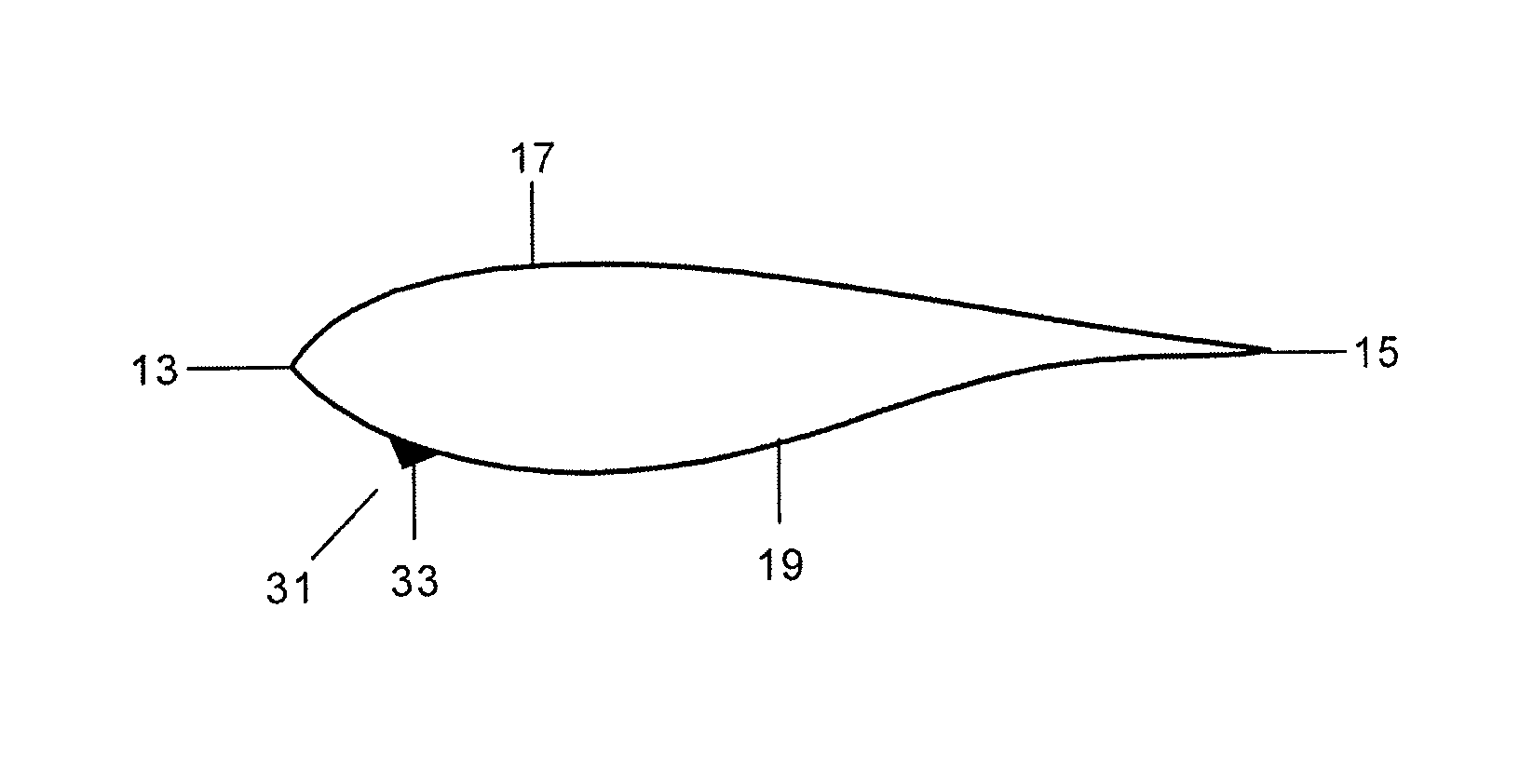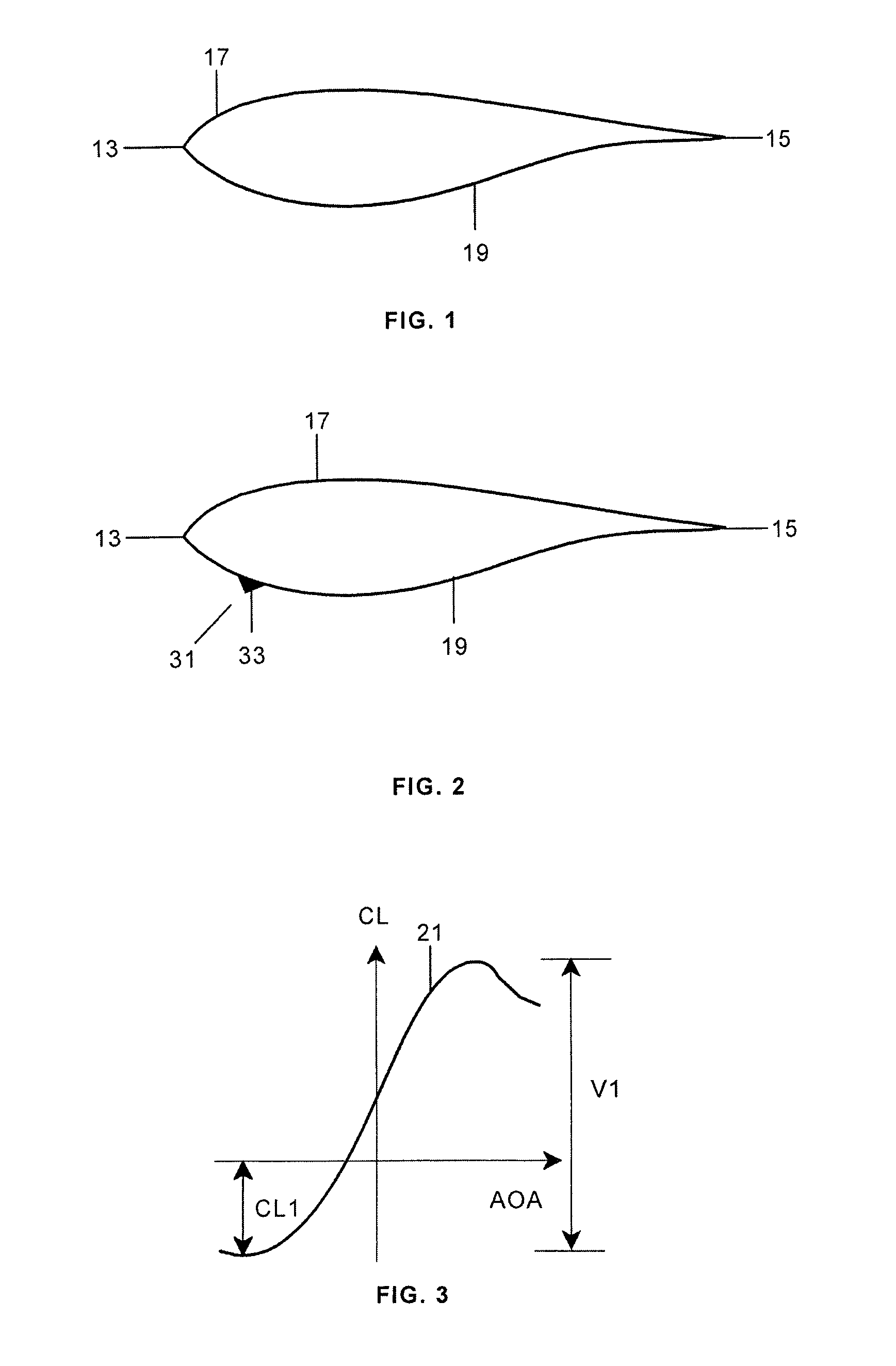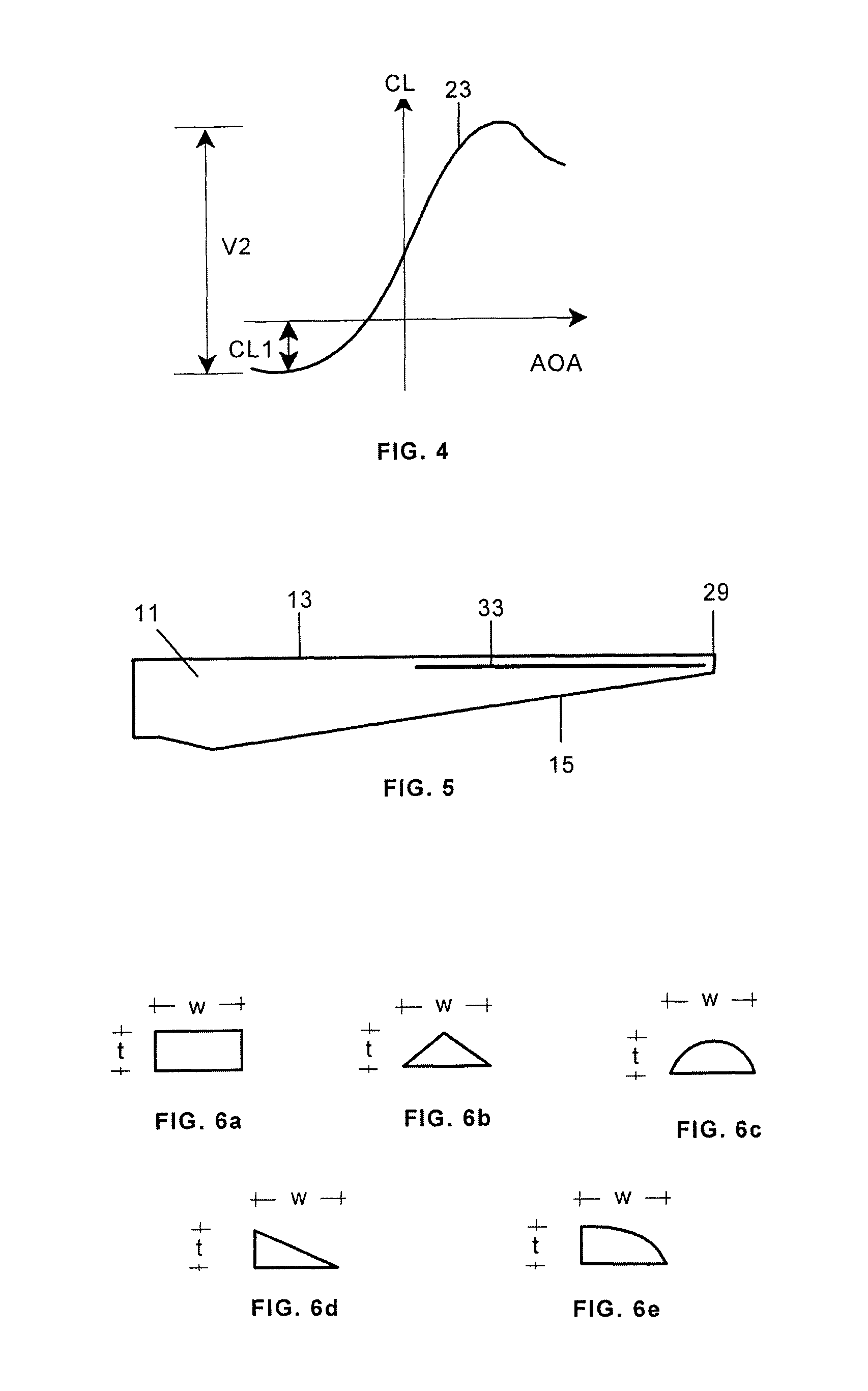Wind turbine blade
a technology of wind turbine blades and blades, which is applied in the direction of liquid fuel engines, vessel construction, marine propulsion, etc., can solve the problems of high fatigue load, high fatigue load, and high fatigue load, and achieve the effect of minimizing fatigue and extreme blade load
- Summary
- Abstract
- Description
- Claims
- Application Information
AI Technical Summary
Benefits of technology
Problems solved by technology
Method used
Image
Examples
Embodiment Construction
[0022]In traditional profile design of wind turbine blades the aim is to get the best performance of the profiles as possible which is often understood as having high lift and low drag.
[0023]A typical wind turbine blade 11 has generally a flow-optimized profile such as the profile shown in FIG. 1 having a leading edge 13, a trailing edge 15 and a lifting surface with a suction side 17 and a pressure side 19.
[0024]FIG. 3 shows a lift coefficient CL versus angle of attack AOA typical curve 21 for that type of profiles. These curves have a maximum and a minimum values for CL, being the maximum associated to positive lift and the minimum to negative lift and there is therefore a significant variation V1 between maximum positive lift and maximum negative lift.
[0025]According to the present invention the high fatigue loads appearing in those situations in which the outer section of the blade has a negative lift and suddenly changes to a positive lift or vice versa, especially due to turbu...
PUM
 Login to View More
Login to View More Abstract
Description
Claims
Application Information
 Login to View More
Login to View More - R&D
- Intellectual Property
- Life Sciences
- Materials
- Tech Scout
- Unparalleled Data Quality
- Higher Quality Content
- 60% Fewer Hallucinations
Browse by: Latest US Patents, China's latest patents, Technical Efficacy Thesaurus, Application Domain, Technology Topic, Popular Technical Reports.
© 2025 PatSnap. All rights reserved.Legal|Privacy policy|Modern Slavery Act Transparency Statement|Sitemap|About US| Contact US: help@patsnap.com



